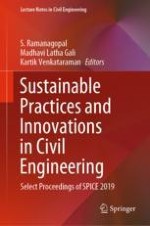This book presents the select proceedings of the International Conference on Sustainable Practices and Innovations in Civil Engineering (SPICE 2019). The chapters discuss emerging and current research in sustainability in different areas of civil engineering, which aim to provide solutions to sustainable development. The contents are broadly divided into the following six categories: (i) structural systems, (ii) environment and water resource systems, (iii) construction technologies, (iv)geotechnical systems, (v) innovative building materials, and (vi) transportation. This book will be of potential interest for students, researchers, and practitioners working in sustainable civil engineering related fields.
